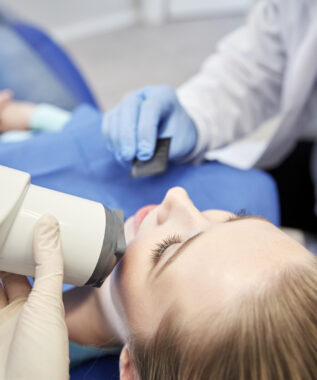 When your teeth experience varying levels of damage, the right custom-designed restorative treatment can usually help you address the problem and preserve their health and integrity. The process of extracting the tooth isn’t typically an option, unless there is no other restorative treatment that can successfully save the tooth. Because of this, the recommendation to extract your tooth can have several important implications. On one hand, it means that your tooth is in serious trouble, and can threaten your oral health if it remains. On the other hand, it means you have a chance to mitigate this threat and restore your smile more effectively.
When your teeth experience varying levels of damage, the right custom-designed restorative treatment can usually help you address the problem and preserve their health and integrity. The process of extracting the tooth isn’t typically an option, unless there is no other restorative treatment that can successfully save the tooth. Because of this, the recommendation to extract your tooth can have several important implications. On one hand, it means that your tooth is in serious trouble, and can threaten your oral health if it remains. On the other hand, it means you have a chance to mitigate this threat and restore your smile more effectively.
Why it’s a last resort
When your dentist recommends treatment for your damaged tooth, the treatment depends on the specific nature and severity of your tooth’s concern. For example, if the tooth has a fracture in it, or a piece has broken off of its main crown structure, then a custom-designed restorative crown may be able to completely restore the tooth to its proper, healthy size and shape. However, for a tooth to be successfully restored, it requires sufficient healthy, natural structure to support its restoration. If the damage to the tooth is too great, then a dental crown or other restoration may not suffice to save what remains of the tooth’s natural structure.
Can the tooth be saved?
Because tooth extraction is a last resort solution for restoring your smile, your dentist won’t recommend it until after fully assessing your oral health and your tooth’s damage. In many cases, a severely damaged or compromised tooth can be saved with high-quality restorative treatment, even when patients believe their teeth need to be extracted. If your tooth warrants being extracted, then your dentist will consult with you personally to go over the tooth’s condition and the status of your oral health, as well as plan your restorative dental treatment.
What to do after it’s extracted
If your tooth requires extraction, then your dentist will explain that removing the tooth structure can also have consequences for your oral health. This is another important reason why tooth extraction is only a last resort option – to fully restore your smile afterward, you may have to replace the tooth after it’s been removed. Fortunately, a dental implant restoration may be able to help you regain your healthy smile and bite function by replacing the extracted tooth, including its root, and preserving the health and integrity of your smile moving forward.
Learn if your damaged tooth needs extraction
Tooth extraction is only a last resort for restoring your smile, such as when a tooth is too extremely damaged to be saved with a custom restoration. To learn more, schedule an appointment with us by calling Dreem Dentistry in Leawood, KS, today at 913-681-5500. We also serve patients who live in Overland Park and all surrounding communities.





